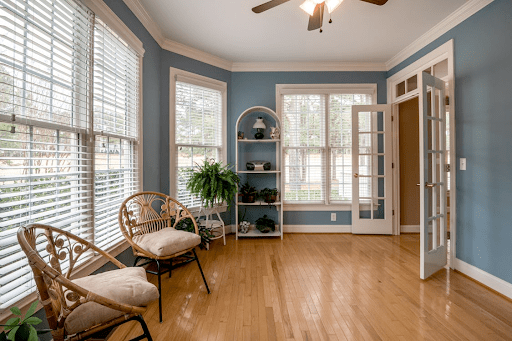What is Rattan? Wicker vs Rattan, Durability & Material Differences

Rattan has become a popular choice for many homes and apartments. It’s often confused with similar materials, but essential differences set them apart. Understanding what rattan is and how it differs from other materials helps you make informed design choices. Many people choose rattan because of its special properties. It’s typically made from climbing palms native to Asia. Its applications range from home decor to modern furniture construction.
Artisans value this unique material for its strength and durability. Skilled craftspeople create intricate weaves that showcase rattan’s versatility. This craftsmanship makes it stand out among other materials. Rattan wood is an excellent way to create visually appealing interiors. While it’s considered an everyday material, it adds distinctive character to any space. Its aesthetics and versatility make it universally appealing. Rattan suits modern, minimalist, and sophisticated interiors equally well. Using this material helps achieve a high level of contemporary elegance. The distinctive weaving catches the eye and makes a lasting impression.
What is Rattan? The Solid Core Material
Today, rattan is widely used for decoration and interior design. Many people wonder “what is rattan?” and why it’s so popular. Rattan comes from tropical palm vines and offers a versatile appearance. It’s naturally strong yet flexible, making it an ideal choice for furniture. The main advantage is its solid core, which provides excellent structural support. Rattan is used for furniture frames as well as decorative woven surfaces. It has a remarkable ability to bend without breaking. Understanding what rattan is helps you create the perfect interior in your home. Here are the key characteristics of this material:
- Solid Core Strength. The dense inner core provides exceptional durability. Because rattan is solid inside, it’s strong enough for load-bearing furniture structures.
- Flexibility and Versatility. Rattan is prized for its ability to bend into various shapes and forms. This quality helps artisans create interesting curved furniture and decorative pieces from rattan.
- Lightweight Construction. Despite its strength, rattan remains relatively light and easy to work with. You can easily move rattan furniture to different areas of your home.
- Natural Aesthetic. Rattan has an attractive, earthy appearance when finished. It’s typically processed into honey, beige, and brown shades. The smooth surface allows for experimentation and creative designs.
- Woven Applications. Rattan works beautifully for creating woven patterns and textures. It’s commonly used to make decorative surfaces on chairs, baskets, and various objects.
- Sustainability. Rattan wood is a renewable resource, making it environmentally friendly. It’s suitable for both interior spaces and outdoor areas like gardens and patios.
Wicker vs Rattan Furniture – The Critical Difference
Furniture plays a crucial role in decorating your home and creating an excellent interior. Nowadays, wicker furniture is often chosen for its beauty and timeless appeal. Rattan furniture is popular because of its classic look and wide range of applications. Thinking about the difference between wicker and rattan? Both are quite popular in homes and apartments. Rattan refers to the actual material, while wicker describes a weaving technique.
Rattan Furniture:
- Rattan is a natural vine with a unique ability to bend while maintaining strength.
- It comes from tropical climbing palms that are exceptionally durable.
- Furniture made from rattan core and woven vine offers long-lasting quality.
- Rattan provides a strong structural foundation for furniture and decor pieces.
- It offers natural tones and beautiful warmth with organic appeal.
- In the wicker vs rattan furniture debate, rattan is used to make highly functional pieces.
- A good example is the rattan side table, which works beautifully in living rooms with morning coffee.
- Solid rattan furniture features improved durability due to its inherent strength.
Wicker Furniture:
- Wicker is a weaving method that interlaces fibers to create furniture or decor.
- Wicker can be made from rattan, bamboo, cane, or synthetic fibers.
- Wicker made from bamboo and other materials looks beautiful but may be less durable.
- Wicker adapts to different shapes and creates various decorative patterns easily.
- It produces attractive textures and a variety of interesting weave patterns.
- Wicker furniture typically features decorative surfaces and intricate woven structures.
- In the wicker vs rattan furniture comparison, wicker furniture is stylish but may have a shorter lifespan.
Rattan vs Cane – Understanding the Relationship
Today, cane is widely used in furniture construction and decoration. Cane is often confused with rattan because of its thinness, lightness, and flexibility. Cane serves purposes beyond decoration — it’s also excellent for weaving intricate patterns. Chairs, decorative panels, and seats commonly feature cane weaving for added beauty. Cane creates smooth, attractive surfaces, while rattan is typically used as the strong main structure. Rattan is lightweight but offers exceptional strength for frames and supports. This makes it popular for structural elements in furniture construction. In the rattan vs cane debate, it’s helpful to learn more about cane and its advantages.
Both rattan and cane come from rattan palms, though they’re extracted differently. The main difference is that cane is extracted from the outer bark layers of the rattan stem. Rattan is a durable material that withstands daily use well for many years. Cane can crack and split if not properly treated or maintained.
Today, cane is used in many furniture applications for decorative purposes. Cane excels at creating smooth, attractive surfaces with intricate patterns. It’s commonly used for materials such as chair seats, backrests, and various decorative patterns. Meanwhile, rattan provides the frame and suitable structural support for furniture pieces.
Cane is very lightweight but offers less structural support than rattan. Rattan is valued for its durability and load-bearing capacity in furniture construction. Cane is also highly flexible for intricate weaves and detailed work. This makes it a popular choice for interesting and decorative furniture elements. In the rattan vs cane comparison, rattan maintains its rigidity for stronger structures.
Cane has a more refined, thin, and smoother appearance than rattan. Rattan has a slightly thicker and more substantial look compared to cane. Combining these two materials helps create beautiful and sustainably fashioned furniture, resulting in pieces that are both durable and decorative.
Rattan vs Wicker vs Bamboo – A Three-Way Comparison
It’s helpful to evaluate a balanced comparison of rattan vs wicker vs bamboo. This comparison helps you choose the best material and create beautiful home decor. Today, these materials differ significantly in structure and application for furniture. The aesthetics of each material are distinctive and provide a unique visual appeal. In summary, rattan is a strong and flexible material compared to bamboo’s rigidity. Bamboo offers stiffness but has a hollow structural form for different applications. Wicker creates complex, attractive patterns that work best for finishing furniture surfaces. Here’s a brief overview of each material’s key characteristics:
- Rattan. Rattan is made from solid-core vines that are pretty flexible and durable. It’s frequently used for frames and woven furniture that needs to be strong. Rattan has attractive, natural, warm tones ideal for decoration and modern interiors. In the rattan vs wicker vs bamboo comparison, rattan is highly resistant to damage. Its strength and versatility make it suitable for both indoor and outdoor use.
- Wicker. Wicker is a weaving technique and method, not a material itself. It can be made from rattan, cane, bamboo, or synthetic fibers for versatility. Wicker is perfect for showcasing creative designs through beautiful weaving techniques. It’s typically decorative and textured, often used for baskets and various decorative items.
- Bamboo. Bamboo has a hollow, rigid structure that is naturally tubular and lightweight. It’s usually light but not as flexible as rattan. Bamboo is ideal for flooring and decorative elements that require structural support inside. Bamboo typically comes in golden to pale, structured tones for modern aesthetics.
Is Rattan or Wicker More Durable?
It’s practical and valuable to know: “Is rattan or wicker more durable?” In this question, durability depends on the material used and the construction method. The strength of the base fiber used influences durability factors. Rattan itself is a durable and strong material with excellent longevity. Wicker’s durability depends on the fiber used, which directly affects its overall strength. The quality of craftsmanship also plays a vital role for both wicker and rattan. Rattan frames with dense, tight weaving have a long lifespan and excellent durability. Synthetic or poorly woven furniture typically has a shorter lifespan and less durability.
Regarding rattan or wicker furniture, it’s helpful to know the care requirements. Rattan withstands wear better over time, while wicker surfaces may show wear more quickly. Rattan can be used both indoors and outdoors due to its exceptional durability. Wicker made from synthetic fibers is better suited for indoor use only. The main advantage of rattan is its flexibility and ability to absorb stress. Wicker can break and crack under heavy loads or constant pressure. Another key difference is repair — rattan frames are easier to fix and restore. Damaged wicker surfaces require extensive restoration and professional attention for proper repair. Rattan retains its shape and structural support for many years with minimal maintenance. Wicker furniture can deteriorate quickly if not properly maintained.




